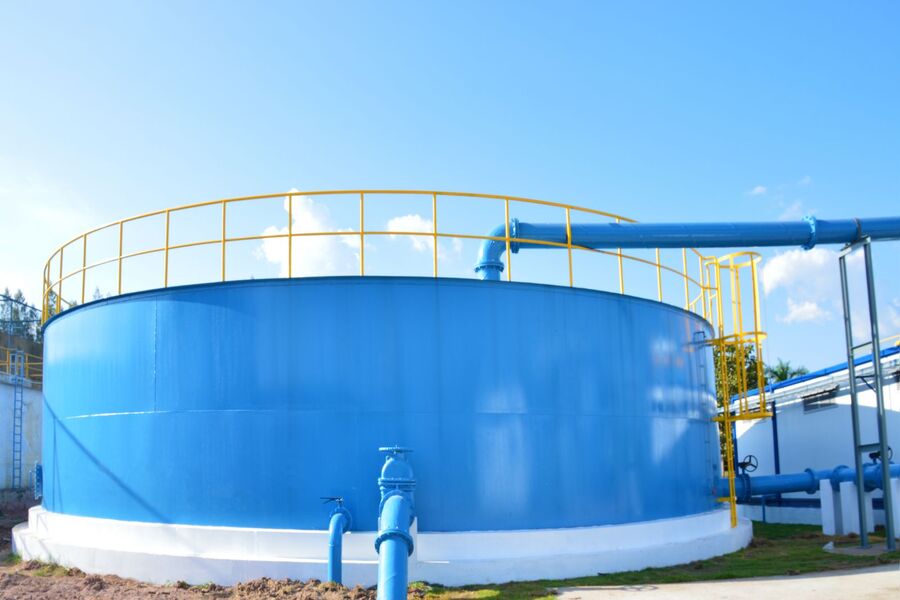Water tanks are essential for storing water in homes, offices, and industries. They play a vital role in ensuring a steady water supply for drinking, cleaning, and other purposes. However, water tanks can face problems like leaks, cracks, and seepage over time. These issues can lead to water loss, contamination, and damage to the structure. Water tank waterproofing is a necessary service to keep tanks in good condition and ensure clean and safe water storage. In this article, we will explain water tank waterproofing services in simple terms, highlighting their importance, methods, and benefits.
What Is Water Tank Waterproofing?
Water tank waterproofing is the process of sealing the interior and exterior surfaces of a water tank to prevent leaks and seepage. This process involves using special materials and techniques to create a protective barrier that stops water from escaping or external moisture from entering. Waterproofing ensures that the tank remains durable, hygienic, and functional.
Why Is Waterproofing Important for Water Tanks?
- Prevents Water Leaks:
- Leaks in water tanks can lead to water wastage and reduced water supply.
- Waterproofing seals cracks and prevents water loss.
- Stops Contamination:
- Cracks and leaks can allow dirt, bacteria, and chemicals to enter the tank.
- Waterproofing keeps the water clean and safe for use.
- Protects the Structure:
- Water seepage can weaken the walls and base of the tank over time.
- Waterproofing strengthens the tank and extends its lifespan.
- Reduces Maintenance Costs:
- Repairing leaks and cracks can be expensive.
- Waterproofing prevents these problems, saving money on maintenance.
- Ensures Hygiene:
- Waterproofing eliminates dampness and prevents the growth of mold and algae inside the tank.
- Improves Efficiency:
- A waterproofed tank retains water without loss, ensuring a consistent supply.
Common Problems Fixed by Waterproofing
- Cracks in Walls and Base: Waterproofing seals cracks and stops water from escaping or external moisture from entering.
- Leakage: It prevents water from leaking out, reducing wastage.
- Dampness: Waterproofing eliminates damp patches inside and outside the tank.
- Growth of Algae and Mold: It keeps the interior surface dry and clean, preventing the growth of harmful organisms.
- Weakening of Structure: Waterproofing protects the tank from erosion and wear caused by seepage.
Types of Water Tanks That Need Waterproofing
- Concrete Tanks:
- Concrete tanks are prone to cracks and seepage due to their porous nature.
- Waterproofing is essential to keep them leak-proof.
- Steel Tanks:
- Steel tanks may develop rust and leaks over time.
- Waterproofing prevents corrosion and ensures durability.
- Underground Tanks:
- Underground tanks are exposed to groundwater pressure and external moisture.
- Waterproofing protects them from seepage and leaks.
- Overhead Tanks:
- Overhead tanks face weather conditions like rain and heat.
- Waterproofing shields them from external damage.
- Plastic Tanks:
- While plastic tanks are less prone to cracks, waterproofing adds an extra layer of protection.
Types of Waterproofing for Water Tanks
- Cementitious Waterproofing:
- This method uses cement-based coatings to seal the surface.
- It is simple, cost-effective, and ideal for concrete tanks.
- Liquid Waterproofing:
- Liquid coatings, such as polyurethane or epoxy, are applied to the surface.
- Once dried, they form a flexible, waterproof layer.
- Membrane Waterproofing:
- Waterproof membranes made of rubber or plastic are installed on the tank surface.
- This method provides long-lasting protection.
- Crystalline Waterproofing:
- Crystalline chemicals are applied to the concrete surface.
- They react with water to form crystals that block pores and prevent seepage.
- Bituminous Waterproofing:
- Bitumen-based coatings are used to create a strong waterproof barrier.
- This method is suitable for both underground and overhead tanks.
Steps in Water Tank Waterproofing
- Inspection:
- Professionals inspect the tank to identify cracks, leaks, and weak points.
- Cleaning:
- The tank is cleaned to remove dirt, algae, and other contaminants.
- A clean surface ensures proper adhesion of waterproofing materials.
- Repairing Cracks:
- Cracks and holes in the tank are repaired using sealants or fillers.
- Application of Waterproofing Material:
- The chosen waterproofing material is applied to the tank’s interior and exterior surfaces.
- Multiple layers may be added for better protection.
- Drying and Curing:
- The waterproofing material is allowed to dry and cure completely.
- Testing:
- The tank is filled with water to test for leaks and ensure effective waterproofing.
Signs Your Water Tank Needs Waterproofing
- Visible Cracks: Cracks on the walls or base of the tank indicate a need for waterproofing.
- Water Leaks: Leaking water is a clear sign that the tank requires sealing.
- Algae Growth: The presence of algae inside the tank suggests moisture problems.
- Damp Walls: Damp patches on the exterior of the tank show water seepage.
- Reduced Water Levels: A drop in water levels without usage points to leaks.
Benefits of Water Tank Waterproofing
- Prevents Water Wastage: Waterproofing keeps water inside the tank, reducing wastage.
- Ensures Clean Water: It stops contamination, ensuring safe and hygienic water storage.
- Extends Lifespan: Waterproofing strengthens the tank and prevents damage, increasing its durability.
- Saves Money: Avoiding leaks and repairs saves money on maintenance.
- Enhances Efficiency: A waterproofed tank retains water efficiently, ensuring a steady supply.
- Promotes Health and Safety: By preventing mold and algae growth, waterproofing keeps the tank clean and safe.
DIY Waterproofing: Is It Possible?
While some people may attempt waterproofing as a DIY project, it is often better to hire professionals. Waterproofing a water tank requires specialized tools, materials, and knowledge. Mistakes can lead to further damage and costly repairs. Hiring experts ensures that the job is done correctly and provides long-lasting results.
Cost of Water Tank Waterproofing Services
The cost of waterproofing services depends on:
- The size and type of water tank.
- The extent of damage or leakage.
- The waterproofing materials used.
- Labor charges in your area.
Though it may seem expensive initially, waterproofing is a long-term investment that saves money by preventing water loss and damage.
Choosing the Right Waterproofing Service
- Experience: Choose professionals with experience in water tank waterproofing. 3M Waterproofing has 11 year waterproofing service experience.
- High-Quality Materials: Ensure they use durable and reliable waterproofing materials.
- Affordable Pricing: Compare quotes from different service providers to find the best value.
- Warranty: Select a company that offers a warranty for their work. Get a reliable waterproofing solution with 12 months warranty from 3M Waterproofing.
- Customer Reviews: Read reviews or ask for recommendations to find a trustworthy service provider.
Conclusion
Water tank waterproofing is an essential service for maintaining clean and safe water storage. It prevents leaks, contamination, and structural damage, ensuring the efficiency and durability of water tanks. By choosing the right waterproofing method and hiring professionals, you can protect your water supply and enjoy peace of mind. Waterproofing is not just a maintenance task—it is an investment in the health, safety, and functionality of your home or business.

